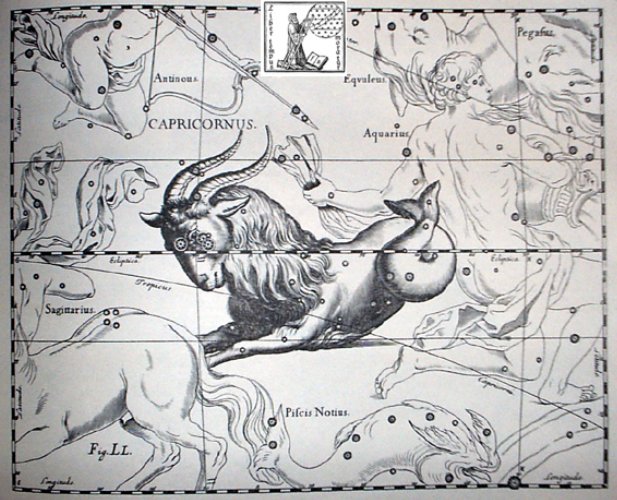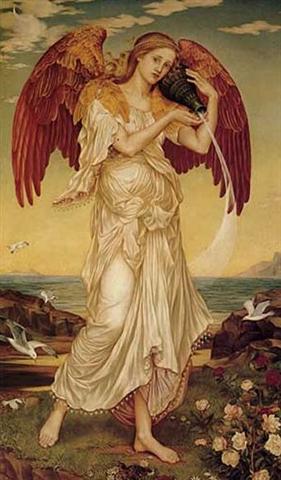Are we getting anywhere? Yes, we have come to
realize the importance of the time of the Bull and the distance
61 (= 366 / 6) precessional days from there up to the time of
the C text.
 |
 |
 |
|
Cb6-19 (526) |
Cb6-20 |
Cb6-21 (136) |
|
kua
tupu te mea ke |
ALTAIR
(*164)
SCHEAT
AQUARII,
FOMALHAUT
(*347 = *164 + 183) |
ALKES (*165)
FUM AL
SAMAKAH (*348 = 12 * 29) |
DUBHE (*166)
SCHEAT
PEGASI (*349) |
|
February
28 (424) |
March 1 (60) |
2 |
|
DECEMBER 29 |
30 (364) |
31 |
In DECEMBER 31 the Sun was at
Dubhe (α
Ursae Majoris) while Scheat (β Pegasi) was at the
Full Moon. 61 precessional days later these
stars would have moved to March 2 (61). A pair
of plants - growing from what could be the
primeval mound - are leaning forward in Cb6-21,
i.e. from Scheat Pegasi a new year was running ahead.
The bent henua mound belonged in the
daylight, in contrast to the night apex in
Cb6-19.
...
Brown associates it [Hamal] with Aloros, the first of
the ten mythical kings of Akkad anterior to the
Deluge, the duration of whose reigns
proportionately coincided with the distances
apart of the ten chief ecliptic stars beginning
with Hamal, and he deduces from this kingly
title the Assyrian Ailuv, and hence the
Hebrew Ayil; the other stars
corresponding to the other mythical kings being
Alcyone, Aldebaran, Pollux, Regulus, Spica,
Antares, Algenib, Deneb Algedi, and Scheat
...
|
Sumerian W-B. 144 |
|
1 Alulim |
28,800 |
|
2 Alagar |
36,000 |
|
3 Enmenluanna |
43,200 |
|
4 Eumengalanna |
28,800 |
|
5 Divine Dumuzi |
36,000 |
|
6 Ensibzianna |
28,800 |
|
7 Enmenduranna |
21,000 |
|
8 Ubardudu |
18,600 |
|
9 |
- |
|
10 |
- |
|
Sum |
241,200 |
|
|
Sumerian W-B. 62 |
|
1 Alulim |
67,200 |
|
2 Alagar |
72,000 |
|
3 Kidunnushakinkin |
72,000 |
|
4 ... ? |
21,600 |
|
5. Divine Dumuzi |
28,800 |
|
6 Enmenluanna |
21,600 |
|
7 Enzibzianna |
36,000 |
|
8 Eumenduranna |
72,000 |
|
9 Arad-gin |
28,800* |
|
10 Ziusudra |
36,000 |
|
Sum |
456,000 |
|
|
Berossos |
|
1 Aloros |
36,000 |
|
2 Alaparos |
10,800 |
|
3 Amelon |
46,800 |
|
4 Ammenon |
43,200 |
|
5 Megalaros |
64,800 |
|
6 Daonos |
36,000 |
|
7 Euedoraches |
64,800 |
|
8 Amempsinos |
36,000 |
|
9 Opartes |
28,800 |
|
10 Xisuthros |
64,800 |
|
Sum |
432,000 |
|
|
The Bible (King James'
verison) |
|
1 Adam |
130 |
|
2 Seth |
105 |
|
3 Enoch |
90 |
|
4 Kenan |
70 |
|
5 Mahalel |
65 |
|
6 Jared |
162 |
|
7 Enoch |
65 |
|
8 Methuselah |
187 |
|
9 Lamech |
182 |
|
10 Noah: until Flood |
600 |
|
Sum |
1,656 |
|
|
Manuscript E (p.1) |
|
1 |
ko oto uta |
ariki motongi |
|
2 |
ko tangaroa.a oto uta |
ariki motongi |
|
3 |
ko tiki hati.a tangaroa |
ariki motongi |
|
4 |
ko roroi.a tiki hati |
ariki motongi |
|
5 |
ko tuu kumā.a roroi |
ariki motongi |
|
6 |
ko ataranga.a tuu kumā |
ariki motongi |
|
7 |
ko harai.a ataranga |
ariki motongi |
|
8 |
ko taana.a harai |
ariki motongi |
|
9 |
ko matua.a taana |
ariki motongi |
|
10 |
ko hotu.a matua |
ariki motongi |
|
O maori te ariki nei.
etahi te angahuru. ko
maori. te ingoa o te
kainga. ko marae renga
te ingoa. o te maara
noho o te ariki.nui.ko
ma rae tohia te rua
maara noho o te ariki. |
|
The last
of the 10 mythical kings of Akkad could have
corresponded to Scheat Aquarii (δ). Once upon
a time this would have been 8 days after the solstice
in DECEMBER 21 (355), but at the probable time frame used by the
creator of the C text it seems to have been 8 +
61 = 69 days after the solstice. And the new
growth would then come alive 71 days after the
solstice, at Scheat Pegasi (β).
According
to the Roman system the month of Mars
(Martius, March)
did not begin until Martius 2:
... February 24 was 'the sixth
day before the Kalends of March' using Roman
inclusive counting (March 1 was the 'first day')
...
|
Days before the Kalends of March |
|
February 24 |
25 |
26 |
27 |
28 |
March 1 |
|
6th |
5th |
4th |
3rd |
2nd |
1st |
The
Babylonian zodiac had the symbol for the planet Mars
not in early March but at the
tail of the Goatfish (approximately our
Capricorn):



In Babylonian times there was
a measure of time between the tail of the Goatfish
(Deneb Algiedi) and the
Great One (approximately our Aquarius), but
since that ancient time the Sun had come earlier and earlier
in the year and forced a compression of the star
calendar.
Probably this explains why the
calendar of the
year on side a of the G tablet was drawn
compressed. From Ga2-27 (π) up to and including
Ga7-10 (71 = 26000 / 366) there were 181 - 57 = 124 glyphs and
124 + 61 = 185 days. And 229 (glyphs on side a)
+ 61 = 290 (10 * 29).
The time for the origin of new growth came earlier and earlier because the precession
forced the Sun earlier and earlier in
the year.
|
Tupu 1.
Shoot, sprout, bud; to sprout, to bud.
2. Pregnant: vî'e tupu (o te poki);
to be conceived (of fetus in its
mother's womb): he-tupu te poki i
roto i te kopú o toona matu'a.
Vanaga.
To grow, to sprout, to
germinate, to come forth, to conceive,
pregnant, germ; mea tupu, plant;
tupu ke avai, of rapid growth;
tupu horahorau, precocious;
hakatupu, to produce, to stimulate
growth, to excite. P Pau.: fakatupu,
to raise up, to create. Mgv.: tupu,
to grow, to conceive, to be pregnant.
Mq.: tupu, to grow, to sprout, to
conceive. Ta.: tupu, to grow, to
sprout. Churchill.
Mgv.: Tupu, the
best or worst, used of men or of bad
qualities. Sa.: tupu, king. Ma.:
tupu, social position, dignity.
Churchill. |
|
Mea 1.
Tonsil, gill (of fish). 2. Red (probably
because it is the colour of gills);
light red, rose; also meamea. 3.
To grow or to exist in abundance in a
place or around a place: ku-mea-á te
maîka, bananas grow in abundance (in
this place); ku-mea-á te ka,
there is plenty of fish (in a stretch of
the coast or the sea); ku-mea-á te
tai, the tide is low and the sea
completely calm (good for fishing);
mau mea, abundance. Vanaga.
1. Red;
ata mea,
the dawn.
Meamea,
red, ruddy, rubricund, scarlet,
vermilion, yellow;
ariga
meamea, florid;
kahu meamea
purple;
moni meamea, gold;
hanuanua
meamea, rainbow;
pua ei
meamea, to make yellow.
Hakameamea,
to redden, to make yellow. PS Ta.:
mea,
red. Sa.:
memea, yellowish brown,
sere. To.:
memea, drab. Fu.:
mea,
blond, yellowish, red, chestnut. 2. A
thing, an object, elements (mee);
e mea,
circumstance;
mea ke,
differently, excepted, save, but;
ra mea,
to belong;
mea
rakerake, assault;
ko mea,
such a one;
a mea nei,
this; a
mea ka, during;
a mea,
then; no
te mea, because, since,
seeing that;
na te mea,
since; a
mea era, that;
ko mea tera,
however, but.
Hakamea,
to prepare, to make ready. P Pau., Mgv.,
Mq., Ta.:
mea, a thing. 3. In order
that, for. Mgv.:
mea,
because, on account of, seeing that,
since. Mq.:
mea, for. 4. An
individual;
tagata mea,
tagata
mee, an individual. Mgv.:
mea,
an individual, such a one. Mq., Ta.:
mea,
such a one. 5. Necessary, urgent;
e mea ka,
must needs be, necessary;
e mea,
urgent. 6. Manners, customs. 7. Mgv.:
ako-mea,
a red fish. 8. Ta.:
mea,
to do. Mq.:
mea, id. Sa.:
mea,
id. Mao.:
mea, id. Churchill. |
When Metoro said kua tupu te mea ke,
we could possibly translate te mea ke
as the other (ke) - i.e. ancient (?) - pillar of
dawn (mea).
... Rangitokona, prop up
the heaven! // Rangitokona, prop up the
morning! // The pillar stands in the empty
space.
The thought [memea] stands
in the earth-world - // Thought stands also in
the sky.
The kahi stands in the
earth-world - // Kahi stands also in the
sky.
The pillar stands, the pillar -
// It ever stands, the pillar of the sky ...

|



